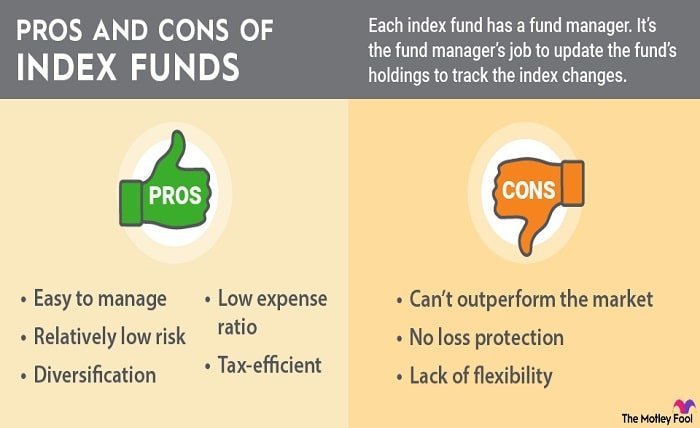The Ultimate Guide on How to Invest in Index Funds: A Beginner’s Blueprint

When it comes to building long-term wealth, few investment strategies can rival the simplicity and effectiveness of index funds. As more and more individuals seek to make smart financial decisions, understanding how to invest in index funds has become crucial. Index funds offer a way to invest in a broad spectrum of stocks or bonds that mirror a particular market index, providing diversification, low costs, and historical outperformance compared to other types of investments.
For beginners, index funds can seem overwhelming, but in reality, they are one of the most accessible and cost-effective ways to invest in the stock market. In this guide, we’ll take you step by step through the process of how to invest in index funds, providing you with the knowledge and confidence you need to start building your investment portfolio today.
What Are Index Funds and How Do They Work?
Before diving into how to invest in index funds, it’s essential to understand what they are and how they function. An index fund is a type of mutual fund or exchange-traded fund (ETF) designed to replicate the performance of a specific market index, such as the S&P 500, Dow Jones Industrial Average, or Nasdaq-100.
Unlike actively managed funds, which rely on fund managers to pick stocks, index funds are passively managed. This means they aim to mirror the performance of the index they track by holding the same stocks in the same proportions. The advantage of this approach is that index funds typically have lower fees compared to actively managed funds, making them a cost-effective investment option.
When you invest in an index fund, you essentially own a small piece of each company that makes up the index. For example, if you invest in an S&P 500 index fund, you are indirectly investing in 500 of the largest companies in the United States, such as Apple, Microsoft, and Amazon. This diversification helps reduce the risk of individual stock investments.
Benefits of Investing in Index Funds
Investing in index funds offers numerous benefits that make them an attractive option for both novice and experienced investors. Here’s why you should consider learning how to invest in index funds:
1. Low Costs
Index funds are typically much cheaper to maintain than actively managed funds. Because they are passively managed, there’s less overhead, which translates to lower management fees. Over time, this cost savings can make a significant difference in your overall returns.
2. Diversification
One of the key advantages of index funds is diversification. Instead of picking individual stocks, which can be risky, an index fund spreads your investment across a wide range of companies within a particular index. This diversification helps reduce the risk associated with investing in individual stocks.
3. Consistent Long-Term Returns
Index funds have historically provided reliable long-term returns that often outperform actively managed funds. While there’s no guarantee that past performance will predict future results, the general trend shows that index funds tend to perform well over time.
4. Simplicity
Investing in index funds is relatively straightforward. There’s no need to research individual stocks or keep track of numerous companies. By investing in an index fund, you gain exposure to a broad range of companies, making it an easy choice for passive investors.
5. Automatic Reinvestment
Many index funds offer automatic reinvestment options, where any dividends earned from the fund are reinvested to purchase more shares. This can help accelerate your investment growth over time, thanks to the power of compound interest.
How to Choose the Right Index Fund for You
Now that you understand what index funds are and their benefits, the next step is to figure out how to choose the right index fund for your investment goals. With so many index funds available, it can be overwhelming to select the best one. Here are some key factors to consider:
1. Determine Your Investment Goals
Before choosing an index fund, it’s important to identify your investment goals. Are you saving for retirement, a major purchase, or just looking to grow your wealth over the long term? Your investment horizon and risk tolerance should guide your choice of index fund.
2. Understand the Index Tracked
Each index fund tracks a specific index, such as the S&P 500, which includes large-cap U.S. companies, or the Nasdaq-100, which focuses on technology stocks. Choose an index fund that aligns with your financial goals and risk tolerance. If you’re looking for stability, an S&P 500 index fund may be ideal, while tech-heavy indexes like the Nasdaq-100 might be a better choice for higher growth potential (and more risk).
3. Consider the Expense Ratio
Expense ratios are fees that fund companies charge to manage an index fund. The lower the expense ratio, the better, as these fees can eat into your returns over time. When choosing an index fund, aim for one with a low expense ratio, typically around 0.05% to 0.2%.
4. Look at Historical Performance
While past performance is not always indicative of future results, it can be helpful to look at how an index fund has performed historically. Check the returns of the fund over the past 1, 3, 5, and 10 years to get a sense of how well it has performed relative to other funds.
5. Check the Fund’s Liquidity
Liquidity refers to how easily an asset can be bought or sold. An index fund with higher liquidity is generally easier to buy or sell without affecting the price. Look for funds with high trading volume to ensure ease of transactions.
How to Invest in Index Funds: A Step-by-Step Guide
Now that you understand how to choose the right index fund, let’s dive into the practical steps on how to invest in index funds. Here’s a simple guide to get you started:
1. Open a Brokerage Account
To invest in index funds, you’ll need to open a brokerage account. Many brokerage firms offer access to a wide range of index funds, including both mutual funds and ETFs. Some popular brokerage platforms include Vanguard, Fidelity, Charles Schwab, and TD Ameritrade.
2. Fund Your Account
Once your brokerage account is set up, the next step is to fund it. This can be done by linking your bank account and transferring money to your brokerage account. Be sure to start with an amount you’re comfortable investing, and consider starting with a small sum while you get familiar with the process.
3. Select an Index Fund
Now that your account is funded, you can choose an index fund to invest in. Search for the specific index you want to track (such as the S&P 500) and review the available funds. Look for funds with low expense ratios and strong historical performance.
4. Place Your Order
Once you’ve chosen your fund, it’s time to place your order. For ETFs, this involves purchasing shares on the stock market. For mutual funds, you’ll place an order with the brokerage. Decide whether you want to invest a lump sum or set up automatic investments.
5. Monitor Your Investments
After you’ve invested in index funds, it’s important to monitor your portfolio periodically. Check in on the performance of your fund and adjust your strategy if needed. Remember, investing in index funds is a long-term strategy, so avoid making impulsive decisions based on short-term market fluctuations.
Common Mistakes to Avoid When Investing in Index Funds
While investing in index funds is a straightforward process, there are some common mistakes that new investors often make. Here are a few pitfalls to watch out for:
1. Chasing Performance
One mistake many new investors make is chasing after funds with the highest recent performance. While past performance can provide insights, it should not be the sole factor in your decision-making process. Focus on long-term growth and diversification rather than short-term gains.
2. Neglecting to Rebalance Your Portfolio
Over time, your portfolio’s asset allocation can shift due to changes in the performance of different investments. Rebalancing your portfolio periodically ensures that your risk profile remains in line with your goals.
3. Investing Without a Strategy
It’s important to have a clear investment strategy before you start. Know your financial goals, risk tolerance, and time horizon, and align your index fund investments accordingly.
4. Letting Fees Eat Into Your Returns
Fees can significantly affect the long-term growth of your investment portfolio. Be sure to choose index funds with low expense ratios, and avoid funds with excessive management fees.
5. Panic Selling
Market fluctuations can cause anxiety, especially in the early stages of investing. However, it’s important not to panic and sell your investments during market downturns. Stick to your long-term strategy and ride out the volatility.
Conclusion
Investing in index funds is one of the most effective ways to build wealth over time. By providing diversification, low costs, and strong long-term performance, index funds are an excellent choice for both beginners and experienced investors alike. Whether you’re saving for retirement or simply looking to grow your wealth, index funds offer a simple and powerful solution.
By following the steps outlined in this guide and avoiding common mistakes, you can make informed decisions about how to invest in index funds and take charge of your financial future.
FAQs
1. What are index funds?
Index funds are a type of investment fund that aims to replicate the performance of a specific market index, such as the S&P 500. They provide diversification and low costs.
2. How do index funds work?
Index funds work by tracking the performance of a market index. Instead of selecting individual stocks, they hold all the stocks that make up the index in the same proportions.
3. How do I choose the right index fund?
Consider your investment goals, risk tolerance, expense ratios, and the index the fund tracks. Look for funds with low fees and strong historical performance.
4. How much money do I need to invest in index funds?
You can start investing in index funds with as little as $50 to $100, depending on the brokerage firm and fund requirements. Some funds allow automatic contributions, making it easier to start small.
5. Are index funds a good long-term investment?
Yes, index funds are generally considered a solid long-term investment strategy due to their diversification, low costs, and historical ability to outperform actively managed funds over time.



